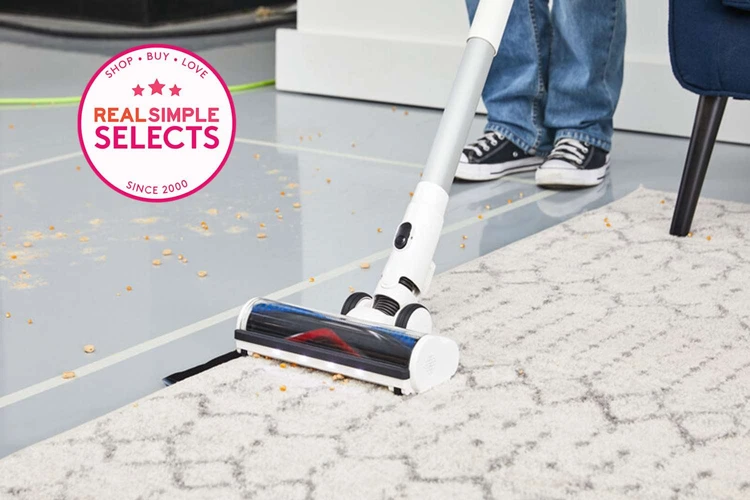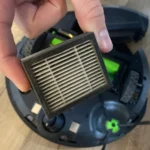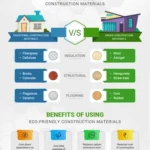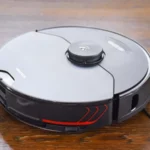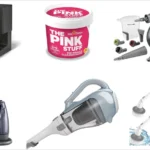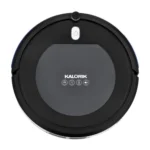Have you ever wondered how eco-friendly your vacuum cleaner is? With so many options on the market, choosing the right one can be overwhelming. But fear not! We’re here to help guide you through the process of choosing the best eco-friendly materials for your vacuum cleaner. From HEPA filters to bamboo brushes, natural rubber to recycled plastic, we’ll take a look at the top options available. Plus, we’ll provide you with tips and tricks for properly maintaining your eco-friendly vacuum cleaner to maximize its lifespan. Let’s dive in and explore how you can make a difference for both your home and the environment.
Why Choose Eco-Friendly Materials?
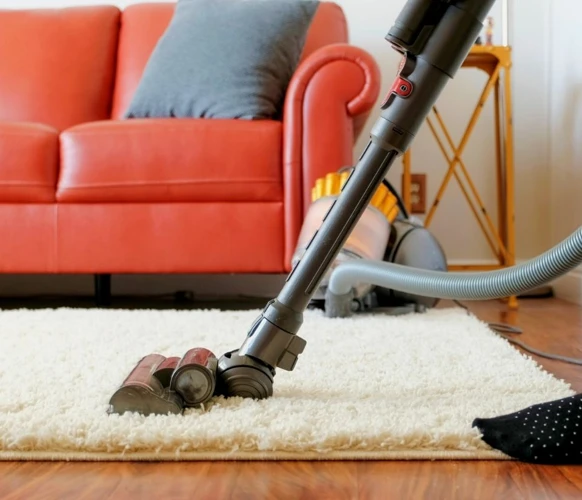
As we become more mindful of our environmental impact, it’s important to consider the materials we use in our household appliances. Vacuum cleaners, in particular, can be made from a variety of materials that range in their eco-friendliness. Choosing eco-friendly materials not only benefits the planet, but also has positive effects on our homes and daily lives. In this section, we’ll explore the benefits of using eco-friendly materials in more detail and provide a list of the top materials to look for when shopping for a vacuum cleaner. Additionally, we will discuss key factors to consider when choosing the best eco-friendly material for your needs.
Benefits for Your Home
When it comes to choosing eco-friendly materials for your vacuum cleaner, there are several benefits for your home that you should consider.
Improved Indoor Air Quality: Traditional vacuum cleaners can kick up dust and other small particles into the air, which can cause allergies or other respiratory problems. Using vacuums with HEPA filters can improve the air quality of your home by trapping those tiny particles and reducing the spread of allergens.
Protects Your Floors: Using eco-friendly materials like bamboo brushes is great for cleaning soft or delicate floors like hardwoods, which require extra care to keep from getting scratched. By using natural materials, you can prolong the life of your floors while still keeping them clean.
Chemical-Free Cleaning: Many traditional cleaners rely on chemicals or harsh cleaning agents to disinfect surfaces, which can be harmful to children or pets. Vacuums that use natural rubber or other eco-friendly materials don’t rely on chemicals to clean, making them safer for your family.
To learn more about eco-friendly materials and their benefits for your vacuum cleaner, check out our article on top 5 eco materials for vacuum cleaners.
Benefits for the Environment
Choosing eco-friendly materials for your vacuum cleaner goes beyond just the benefits for your home. It also greatly impacts the environment we live in. Here are some benefits of using eco-friendly materials for your vacuum cleaner:
- Reduced Carbon Footprint: By choosing eco-friendly materials, you reduce the amount of carbon emissions that are produced during the manufacturing process. These materials are often sourced sustainably and require less energy to produce, making them a greener choice.
- Less Waste: Eco-friendly materials often come from renewable sources that can be regenerated, reducing the amount of waste generated. They can also be easily recycled or composted after use, preventing them from taking up space in landfills for hundreds of years.
- Protecting Natural Resources: Choosing eco-friendly materials helps to protect natural resources such as forests, water, and non-renewable resources by finding alternative sources that are more sustainable.
- Less Harmful Chemicals: Traditional vacuum cleaners can release harmful chemicals into the environment, contributing to pollution. Eco-friendly materials are often free of harsh chemicals, making them safer for you and the environment.
- Encourages Innovation: The demand for eco-friendly materials leads to more innovation in the industry, encouraging manufacturers to create new products that are sustainable, efficient, and longer-lasting. This results in a better future for both the environment and consumers.
Choosing eco-friendly materials for your vacuum cleaner not only benefits your home, but also the environment as a whole. It’s an investment in a cleaner and healthier future for all. To learn more about eco-friendly materials for vacuum cleaners, check out our article on /top-5-eco-materials-vacuum-cleaners/.
Top Eco-Friendly Materials for Your Vacuum Cleaner
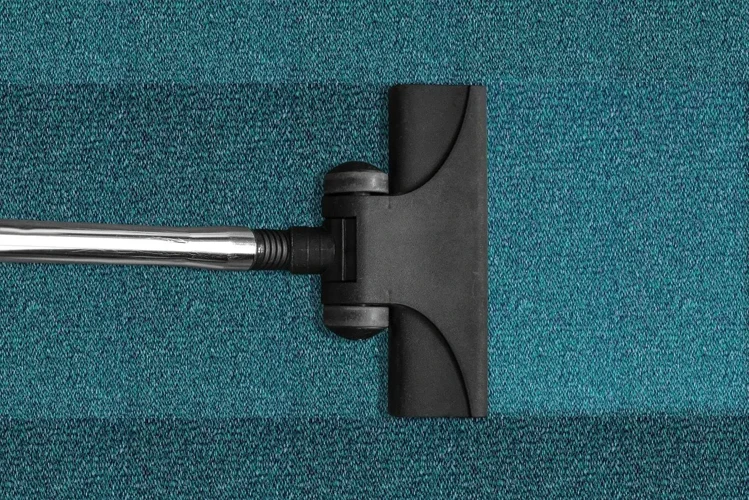
When it comes to choosing the right materials for your vacuum cleaner, there are several eco-friendly options available. It’s important to consider not only the benefits for your home, but also for the environment. From HEPA filters to bamboo brushes and recycled plastic, here are some of the top eco-friendly materials you can choose for your vacuum cleaner. If you want to learn more about eco-friendly vacuum cleaners, check out our previous article here. And for a deeper delve into the differences between bio-plastics and traditional plastics, take a look at our article here.
HEPA Filters
HEPA (High-Efficiency Particulate Air) filters are a popular choice for those looking to purchase an eco-friendly vacuum cleaner. These filters are designed to capture microscopic particles from the air, such as pollen, dust mites, and pet dander. They provide a more thorough and effective cleaning than traditional filters, making them an excellent choice for those with allergies or respiratory issues.
HEPA filters are made from a dense mat of fine fibers that trap particles as they pass through the filter. This mat is typically made from materials like fiberglass, foam, or cotton. Some newer models of HEPA filters use synthetic fibers like polypropylene, which are more durable and easier to clean.
There are several benefits to using HEPA filters in your vacuum cleaner. For one, they can help improve the air quality in your home by removing harmful particles and allergens from the air. This can be especially important for those with allergies or asthma. Additionally, HEPA filters are more effective at removing fine dust and dirt from carpets and floors, ensuring a deeper clean.
When choosing a vacuum cleaner with a HEPA filter, there are a few things to consider. First, make sure the filter is certified by an independent organization, like the Asthma and Allergy Foundation of America (AAFA), to ensure it meets quality standards. Additionally, consider the size and shape of the filter, as well as the number of filters used in the vacuum cleaner.
HEPA filters are a great choice for those looking to purchase an eco-friendly vacuum cleaner. They offer superior cleaning power while also benefiting both the home and the environment. So, if you’re in the market for a new vacuum cleaner, consider one with a HEPA filter to help keep your home clean and healthy.
- Learn about the difference between recycled and upcycled materials and their impact on the environment.
- Discover the benefits of using biodegradable vacuum bags.
- Check out some of the future eco-friendly materials that could be used in vacuum cleaners.
Bamboo Brushes
When it comes to eco-friendly materials for your vacuum cleaner, bamboo brushes are a great option to consider. Here are some reasons why:
| Benefits | Description |
| Renewable resource | Bamboo is a fast-growing and sustainable material compared to traditional plastic brushes. |
| Biodegradable | Bamboo brushes are biodegradable, which means they will decompose naturally and not harm the environment. |
| Durable | Despite being lightweight, bamboo brushes are strong and can withstand heavy use. |
| Gentle on surfaces | Bamboo brushes have soft bristles that won’t scratch or damage delicate surfaces such as hardwood floors or furniture. |
However, it’s important to note that not all bamboo products are created equal. Look for brushes made from sustainably sourced bamboo and with bristles made from natural materials such as coconut fibers or horsehair. These materials are gentle on surfaces while still providing effective cleaning power.
Additionally, it’s worth considering a hybrid brush that combines bamboo with recycled plastic or other eco-friendly materials. This can provide added durability and strength while still using sustainable materials.
Bamboo brushes are a great eco-friendly choice for your vacuum cleaner. They offer numerous benefits for both your home and the environment, and are a durable and effective cleaning tool for a variety of surfaces.
Natural Rubber
Natural Rubber is another eco-friendly material that is commonly used in vacuum cleaners. It is a sustainable and renewable material that is biodegradable and can be easily recycled. Natural rubber has excellent durability, elasticity, and resistance to wear and tear, making it a great choice for vacuum cleaner brushes and other parts.
One of the major advantages of natural rubber is that it is highly effective at removing pet hair and dander from carpets and upholstery. The rubber bristles can easily grab and lift pet hair, which can be difficult to remove with other types of brushes. The flexibility of the rubber also allows it to adapt to different surfaces and contours, providing a more thorough cleaning.
Another benefit of natural rubber is that it is hypoallergenic and free from harmful chemicals, making it safe for use around children and pets. It is also resistant to bacteria and mold, which can help prevent the spread of allergies and other health problems.
To help you understand the benefits of natural rubber further, we have created a table below outlining some of its key features:
| Features | Benefits |
|---|---|
| Durability | Long-lasting and resistant to wear and tear |
| Elasticity | Adapts to different surfaces and contours for a more thorough cleaning |
| Biodegradable | Can be easily decomposed without harming the environment |
| Hypoallergenic | Safe for use around children and pets and does not cause allergies |
| Resistance to Bacteria and Mold | Prevents the spread of allergies and other health problems |
Natural rubber is a great choice for those who want an eco-friendly vacuum cleaner that is effective, safe, and durable. When choosing a vacuum cleaner with natural rubber parts or brushes, make sure to consider the type of floor and debris you will be cleaning, your budget, and your cleaning needs. With proper care and maintenance, your eco-friendly vacuum with natural rubber parts can provide you with many years of effective cleaning.
Recycled Plastic
One of the top eco-friendly materials that you can choose for your vacuum cleaner is recycled plastic. Using recycled plastic as the primary material in your vacuum cleaner can greatly reduce the amount of plastic waste being produced which has a positive impact on the environment.
Recycled plastic is made by taking used plastic items such as bottles, bags, and containers and processing them until they are transformed into a re-usable material. This process reduces the amount of plastic waste that ends up in landfills and oceans, which can take hundreds of years to decompose.
In addition to its eco-friendly benefits, recycled plastic is also a durable and lightweight material that is perfect for vacuum cleaner components such as canisters and handles. It is also cost-effective as compared to other eco-friendly materials like bamboo or natural rubber.
However, it is important to note that not all recycled plastic materials are created equal. Look for vacuums that use high-quality recycled plastic that has been thoroughly processed to ensure it is strong and durable.
In order to choose a vacuum cleaner made from recycled plastic that will effectively clean your home, consider factors such as the type of floor and debris present in your home, your budget, and your cleaning needs.
Here’s a comparison table of different attributes of recycled plastic as a vacuum cleaner material:
| Attributes | Recycled Plastic |
|---|---|
| Eco-Friendliness | Very High |
| Durability | High |
| Weight | Light |
| Cost-Effectiveness | High |
Once you have chosen a vacuum cleaner made from recycled plastic, it is important to take proper care of it. Be sure to regularly clean the filters and canisters to maximize the effectiveness of the vacuum and extend its lifespan. When it comes time to dispose of your vacuum, be sure to properly recycle it to continue the cycle of eco-friendliness.
How to Choose the Right Eco-Friendly Material for You
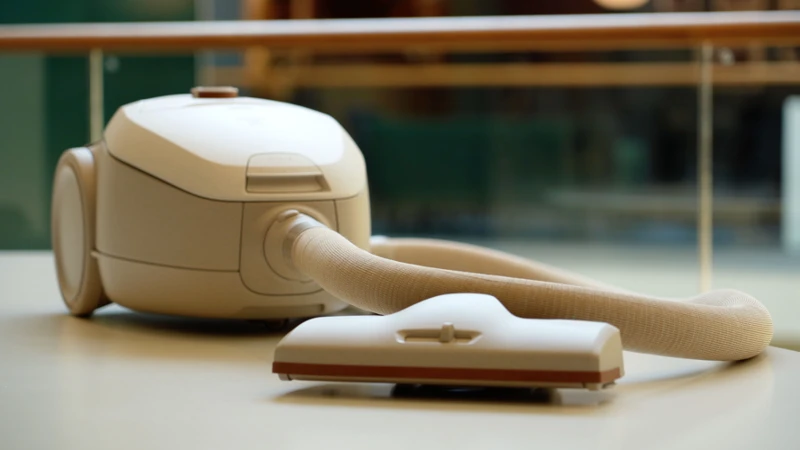
When it comes to choosing an eco-friendly material for your vacuum cleaner, there are several factors to consider, including the type of floor and debris you will be cleaning, your budget, and your cleaning needs. With so many options available, it can be difficult to know where to start. But don’t worry, with a little guidance, you can find the perfect eco-friendly material for your vacuum cleaner that will meet both your cleaning needs and your desire to be environmentally conscious. Let’s take a closer look at some of the factors you should consider when choosing the right eco-friendly material for you.
Type of Floor and Debris
Choosing the right eco-friendly material for your vacuum cleaner begins with considering the type of floor and debris in your home. Different materials are better suited for different types of floors and cleaning needs. Here are some factors to consider:
- Carpet: If you have carpeted floors, you need a vacuum cleaner that can effectively remove dirt and debris from deep within the fibers. Look for a vacuum cleaner with a HEPA filter and a powerful motor. The HEPA filter will trap tiny particles that can trigger allergies, while a powerful motor can ensure efficient cleaning even in thick carpets.
- Hardwood: For hardwood floors, you’ll want a vacuum cleaner with soft bristle brushes or microfiber pads that won’t scratch the surface. Avoid using vacuums with hard bristle brushes on hardwood floors. They can leave scratches and damage the finish.
- Pet hair: If you have pets, you’ll need a vacuum cleaner that is specially designed to pick up pet hair. Look for a vacuum with a motorized brush roll or rubberized brushes that can effectively remove pet hair from carpets and furniture.
- Allergies: If you or a family member suffers from allergies, consider investing in a vacuum cleaner with a HEPA filter. HEPA filters capture airborne allergens such as pollen, dust mites, and pet dander, reducing the amount of allergens in your home.
By considering the type of floor and debris in your home, you can choose the right eco-friendly material that will ensure effective and efficient cleaning while also being gentle on your floors and the environment.
Budget
When it comes to choosing the right eco-friendly material for your vacuum cleaner, budget plays an important role. While most eco-friendly options are priced similarly to traditional options, some can be more expensive. However, investing in eco-friendly materials can often save you money in the long run.
Consider these budget-friendly options:
- Recycled plastic: This material is often less expensive than non-recycled plastic and is just as durable.
- Natural rubber: Rubber is a long-lasting material that is also affordable.
- Bamboo brushes: Bamboo is a sustainable and affordable alternative to traditional plastic brushes.
Consider splurging on these higher-end options:
- HEPA filters: These filters are highly effective at removing small particles from the air, but they can be more expensive than traditional filters.
- Handmade wooden brushes: These brushes are both stylish and sustainable, but they can be more expensive than plastic brushes.
Keep in mind that investing in higher-quality eco-friendly materials can save you money in the long run, as they often last longer and require less frequent replacement. However, if your budget is your primary concern, there are still many budget-friendly options available. As with any purchase, it’s important to weigh the costs and benefits of each option and choose the one that best fits your needs and budget.
Cleaning Needs
When considering the cleaning needs of your home, it is essential to choose the right eco-friendly material for your vacuum cleaner. Factors such as the size of your home, the number of occupants, and frequency of cleaning should be considered before making a purchase.
Types of Surfaces
One important factor to consider is the type of surfaces you will be cleaning with your vacuum cleaner. Different materials work better on different surfaces, and selecting the right one will enhance the life of both your vacuum cleaner and the floor being cleaned.
For example, if you have hardwood or tiled floors in your home, you may want to consider a vacuum cleaner that has a bamboo brush. Bamboo is gentle, yet effective, and won’t scratch your floors like abrasive materials such as metal or plastic. On the other hand, if you have carpets in your home, you may want to opt for a vacuum cleaner with a HEPA filter. HEPA filters are designed to trap fine dust particles and allergens, making them ideal for carpeted areas.
Cleaning Frequency
Another important consideration is how frequently you plan on using your vacuum cleaner. If you have a home with a lot of foot traffic and pets, you may need to use your vacuum cleaner more frequently than someone living alone in a small apartment. In this case, you will want to purchase a vacuum cleaner made of durable materials that can withstand frequent use.
Recycled plastic vacuum cleaners are a great option for those with high cleaning needs. They are sturdy and can withstand daily use without breaking or deteriorating. Additionally, recycled plastic is an eco-friendly alternative to virgin plastic, reducing the amount of plastic waste polluting the environment.
Budget
Finally, your budget is also a vital factor to consider when selecting an eco-friendly vacuum cleaner material. Eco-friendly vacuum cleaners are often more expensive than traditional ones due to their high-quality materials and advanced technology. If budget is a concern, consider opting for a vacuum cleaner with recycled plastic components, which is often less expensive than other eco-friendly alternatives.
Here is a table summarizing cleaning needs and the corresponding eco-friendly materials for a vacuum cleaner:
| Cleaning Needs | Eco-Friendly Material |
|---|---|
| Type of Surface | Bamboo Brushes for hardwood or tiled floors HEPA filters for carpets |
| Cleaning Frequency | Recycled plastic for high cleaning needs Natural rubber for occasional cleaning |
| Budget | Recycled plastic for budget-friendly options Natural rubber for mid-range prices |
Remember to consider your cleaning needs and budget when selecting eco-friendly materials for your vacuum cleaner. By doing so, you can not only improve the cleanliness of your home but also reduce your environmental impact.
Cleaning and Maintenance Tips for Your Eco-Friendly Vacuum
Now that you’ve chosen the right eco-friendly materials for your vacuum cleaner, it’s important to take proper care of it. By following these cleaning and maintenance tips, you’ll enjoy the maximum lifespan and performance of your eco-friendly vacuum, while minimizing the impact on the environment. In this section, we’ll cover how to dispose of dirt and debris properly, as well as the importance of cleaning and replacing filters and brushes on a regular basis. By adopting these practices, you’ll be well on your way to a healthier, more sustainable home cleaning routine.
Proper Disposal of Dirt and Debris
When it comes to using an eco-friendly vacuum cleaner, proper disposal of dirt and debris is just as important as the materials used in its construction. Here are some tips for disposing of dirt and debris the right way:
- Use compost: Dirt and debris from your vacuum cleaner can be used as compost for your garden. This will not only help reduce waste, but also provide natural fertilization for your plants.
- Separate recyclable materials: If you are vacuuming up materials such as paper or plastic, make sure to separate them from other waste and recycle them properly.
- Dispose of hazardous materials carefully: If you are vacuuming up hazardous materials such as batteries or electronics, be sure to dispose of them properly according to your local regulations.
- Consider a bagless vacuum: If you want to reduce waste even further, consider using a bagless vacuum cleaner. This will allow you to empty the dirt and debris directly into a compost bin or recycling bin.
By following these tips, you can not only help reduce waste, but also contribute to a healthier environment. Remember to always dispose of dirt and debris responsibly and according to your local regulations.
Regular Cleaning of Filters and Brushes
To ensure that your eco-friendly vacuum cleaner functions efficiently, it is important to regularly clean its filters and brushes. Here are some tips to keep your vacuum running smoothly:
- Clean the filters: The filters are responsible for trapping dust and allergens. Over time, these filters can get clogged, and their efficiency can reduce. To avoid this, it is recommended to clean the filters once a month. The frequency of cleaning may vary depending on usage.
- Remove the brush roll: Most vacuum cleaners come with a brush roll that helps in picking up dirt and debris. However, it can also accumulate dirt and debris over time. To clean the brush roll, remove it from the vacuum cleaner and use a pair of scissors to cut through any tangled hair or fibers. You can also use a toothbrush or a cleaning brush to remove dirt from the bristles.
- Clean the hoses: Hoses can get clogged too. To clean them, detach the hose from the vacuum cleaner and use a straightened hanger or a pipe cleaner to remove any dirt or debris lodged inside.
- Wash the collection chamber: The collection chamber holds all the dirt and debris. It is recommended to empty it after every use. Once a month, you can wash the chamber with soap and water to remove any remaining dirt or dust.
By following these tips, you can ensure that your eco-friendly vacuum cleaner is functioning at its best, and you are doing your part in preserving the environment.
Conclusion
In conclusion, choosing the right eco-friendly material for your vacuum cleaner can have numerous benefits for both your home and the environment. By opting for materials like HEPA filters, bamboo brushes, natural rubber, and recycled plastic, you can ensure that your cleaning routine is sustainable and environmentally conscious.
Not only do eco-friendly materials reduce the amount of waste in landfills, but they can also save you money in the long run. By investing in high-quality, durable materials, you can avoid the need for constant replacements and repairs. Additionally, using a vacuum cleaner with eco-friendly materials can improve indoor air quality and reduce the risk of respiratory issues.
When selecting the right eco-friendly material for your vacuum cleaner, there are a few key factors to consider. Take into account the type of flooring in your home and the types of debris you typically encounter. Consider your budget and cleaning needs, and be sure to choose materials that are durable and easy to maintain.
To keep your eco-friendly vacuum cleaner in top condition, be sure to follow proper cleaning and maintenance protocols. Dispose of dirt and debris in an environmentally conscious manner, and regularly clean filters and brushes.
Overall, making the switch to eco-friendly materials for your vacuum cleaner is a simple yet impactful way to reduce your environmental footprint and create a healthier home environment for you and your family. So, don’t hesitate to make the change and join the movement towards a cleaner and greener future.
Frequently Asked Questions
What makes a vacuum cleaner eco-friendly?
A vacuum cleaner is considered eco-friendly if it is made from sustainable materials, energy-efficient, and does not harm the environment during use or disposal.
What is a HEPA filter?
HEPA stands for high-efficiency particulate air. These filters trap small particles that can cause asthma and allergy symptoms, including pollen, dust mites, and pet dander.
How do bamboo brushes compare to plastic brushes?
Bamboo brushes are more sustainable than plastic brushes because bamboo is a rapidly renewable resource. Bamboo brushes are also sturdy and can effectively clean carpets and hard floors.
Can natural rubber be recycled?
Yes, natural rubber can be recycled and is biodegradable, making it an eco-friendly material for vacuum cleaner parts.
What is a bagless vacuum cleaner?
A bagless vacuum cleaner does not require disposable vacuum bags. Instead, it uses a dustbin that can be emptied and reused.
How much does an eco-friendly vacuum cleaner cost?
The cost of an eco-friendly vacuum cleaner varies depending on the type and brand. However, they may cost more upfront than traditional vacuum cleaners, but save money over time due to energy efficiency and longer-lasting parts.
Can I use an eco-friendly vacuum cleaner on all types of floors?
Yes, eco-friendly vacuum cleaners can be used on all types of floors, including carpet, hardwood, and tile.
How often should I clean the filters and brushes on my eco-friendly vacuum cleaner?
You should clean the filters and brushes on your eco-friendly vacuum cleaner regularly, ideally once a month, to maintain optimal performance.
What should I do with the dirt and debris collected in my eco-friendly vacuum cleaner?
You can empty the dustbin of a bagless vacuum cleaner into a compost bin or disposal system, following local guidelines for waste management.
Do eco-friendly vacuum cleaners have the same suction power as traditional vacuum cleaners?
Yes, eco-friendly vacuum cleaners can have the same suction power as traditional vacuum cleaners, but they use less energy to operate and are made from sustainable materials.
